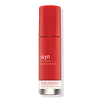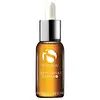What's inside
What's inside
 Key Ingredients
Key Ingredients

 Benefits
Benefits

 Concerns
Concerns

No concerns
 Ingredients Side-by-side
Ingredients Side-by-side

Water
Skin ConditioningHydroxyethylcellulose
Emulsion StabilisingAngelica Archangelica Root Water
Skin ConditioningDimethyl Isosorbide
SolventAstaxanthin
Skin ConditioningErgothioneine
AntioxidantOxycoccus Palustris Seed Oil
AntioxidantRubus Chamaemorus Seed Oil
Skin ConditioningFullerenes
AntimicrobialPropanediol
SolventHaematococcus Pluvialis Extract
AntioxidantCamelina Sativa Seed Oil
Skin ConditioningThymus Vulgaris Flower/Leaf Extract
MaskingBuddleja Davidii Extract
Skin ConditioningGlycerin
HumectantZinc PCA
HumectantSimmondsia Chinensis Seed Oil
EmollientPanax Ginseng Root Extract
EmollientGlycosphingolipids
EmollientHippophae Rhamnoides Fruit Oil
Skin ProtectingPerfluorodecalin
Skin ConditioningTocopherol
AntioxidantTocopheryl Acetate
AntioxidantXanthan Gum
EmulsifyingEthylhexylglycerin
Skin ConditioningRosmarinus Officinalis Extract
AntimicrobialHelianthus Annuus Seed Oil
EmollientSodium Phytate
Butylene Glycol
HumectantPhenoxyethanol
PreservativeHydroxyacetophenone
AntioxidantPvp
Emulsion StabilisingSucrose Palmitate
EmollientCitric Acid
BufferingPotassium Sorbate
PreservativeSodium Benzoate
MaskingWater, Hydroxyethylcellulose, Angelica Archangelica Root Water, Dimethyl Isosorbide, Astaxanthin, Ergothioneine, Oxycoccus Palustris Seed Oil, Rubus Chamaemorus Seed Oil, Fullerenes, Propanediol, Haematococcus Pluvialis Extract, Camelina Sativa Seed Oil, Thymus Vulgaris Flower/Leaf Extract, Buddleja Davidii Extract, Glycerin, Zinc PCA, Simmondsia Chinensis Seed Oil, Panax Ginseng Root Extract, Glycosphingolipids, Hippophae Rhamnoides Fruit Oil, Perfluorodecalin, Tocopherol, Tocopheryl Acetate, Xanthan Gum, Ethylhexylglycerin, Rosmarinus Officinalis Extract, Helianthus Annuus Seed Oil, Sodium Phytate, Butylene Glycol, Phenoxyethanol, Hydroxyacetophenone, Pvp, Sucrose Palmitate, Citric Acid, Potassium Sorbate, Sodium Benzoate
 Reviews
Reviews

Ingredients Explained
These ingredients are found in both products.
Ingredients higher up in an ingredient list are typically present in a larger amount.
Glycerin is already naturally found in your skin. It helps moisturize and protect your skin.
A study from 2016 found glycerin to be more effective as a humectant than AHAs and hyaluronic acid.
As a humectant, it helps the skin stay hydrated by pulling moisture to your skin. The low molecular weight of glycerin allows it to pull moisture into the deeper layers of your skin.
Hydrated skin improves your skin barrier; Your skin barrier helps protect against irritants and bacteria.
Glycerin has also been found to have antimicrobial and antiviral properties. Due to these properties, glycerin is often used in wound and burn treatments.
In cosmetics, glycerin is usually derived from plants such as soybean or palm. However, it can also be sourced from animals, such as tallow or animal fat.
This ingredient is organic, colorless, odorless, and non-toxic.
Glycerin is the name for this ingredient in American English. British English uses Glycerol/Glycerine.
Learn more about GlycerinPhenoxyethanol is a preservative that has germicide, antimicrobial, and aromatic properties. Studies show that phenoxyethanol can prevent microbial growth. By itself, it has a scent that is similar to that of a rose.
It's often used in formulations along with Caprylyl Glycol to preserve the shelf life of products.
Water. It's the most common cosmetic ingredient of all. You'll usually see it at the top of ingredient lists, meaning that it makes up the largest part of the product.
So why is it so popular? Water most often acts as a solvent - this means that it helps dissolve other ingredients into the formulation.
You'll also recognize water as that liquid we all need to stay alive. If you see this, drink a glass of water. Stay hydrated!
Learn more about Water